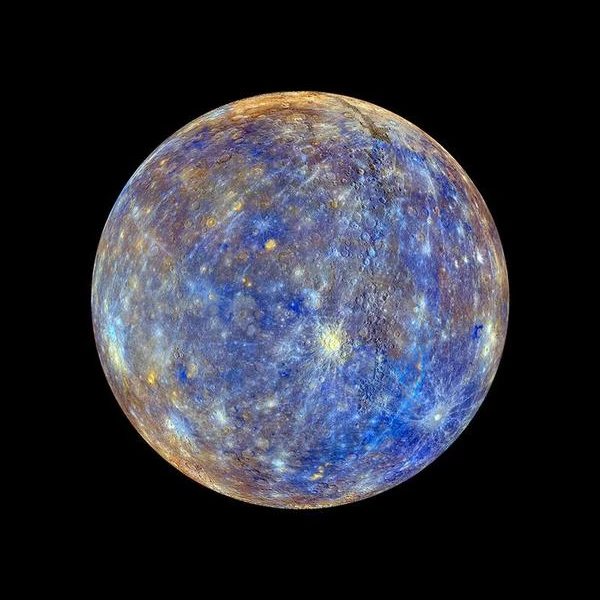
Image: This colorful view of Mercury was produced using imagery from the color imagery campaign during the first Messenger mission. These colors are not those of Mercury, they have been enhanced to differentiate the chemical and mineralogical aspect of the rocks that make up the surface of Mercury. Credit: NASA / Johns Hopkins University Applied Physics Laboratory / Carnegie Institution of Washington.
• Small size: Mercury is the smallest planet in the solar system, with a diameter of approximately 4,880 kilometers.
• Eccentric Orbit: Mercury's orbit is highly eccentric, meaning it is highly elliptical rather than circular. This means that Mercury's distance from the Sun varies considerably during its orbit.
• Slow Rotation: Mercury has a very slow rotation period, which means it spins very slowly. Its day (period of rotation) lasts approximately 176 Earth days.
• No Significant Atmosphere: Mercury has a very thin atmosphere, composed mostly of helium and traces of sodium, potassium, and oxygen. This atmosphere is so thin that it is often considered zero.
• Extreme temperatures: Due to its proximity to the Sun and the absence of a significant atmosphere, the surface temperature of Mercury varies considerably between the daytime side (where the temperature can reach around 430°C) and the nighttime side (where the temperature can drop to about -180°C).
• Impact craters: Mercury's surface is covered in impact craters, evidence of the history of intense bombardment it underwent during the formation of the solar system.
• Varied topography: Mercury's surface has a variety of topographic features, including plains, ridges, and cliffs.
• Low Gravity: Due to its small size, Mercury's surface gravity is very low, about 38% of Earth's surface gravity.
• No moon: Mercury has no natural moon.
• Frozen volatiles: Certain regions of the poles of Mercury have very low temperatures, which has allowed the preservation of volatiles such as water and carbon dioxide in the form of ice.
Mercury never deviates more than 27 degrees from the Sun (this is the angle of clockwise when it is one o'clock). Learn more.
Definition of the word planet (August 24, 2006):
"A planet is a celestial body which is in orbit around the Sun, which has sufficient mass so that its gravity overcomes the cohesive forces of the solid body and maintains it in hydrostatic equilibrium (spherical shape), and which has eliminated any body moving in a near orbit".